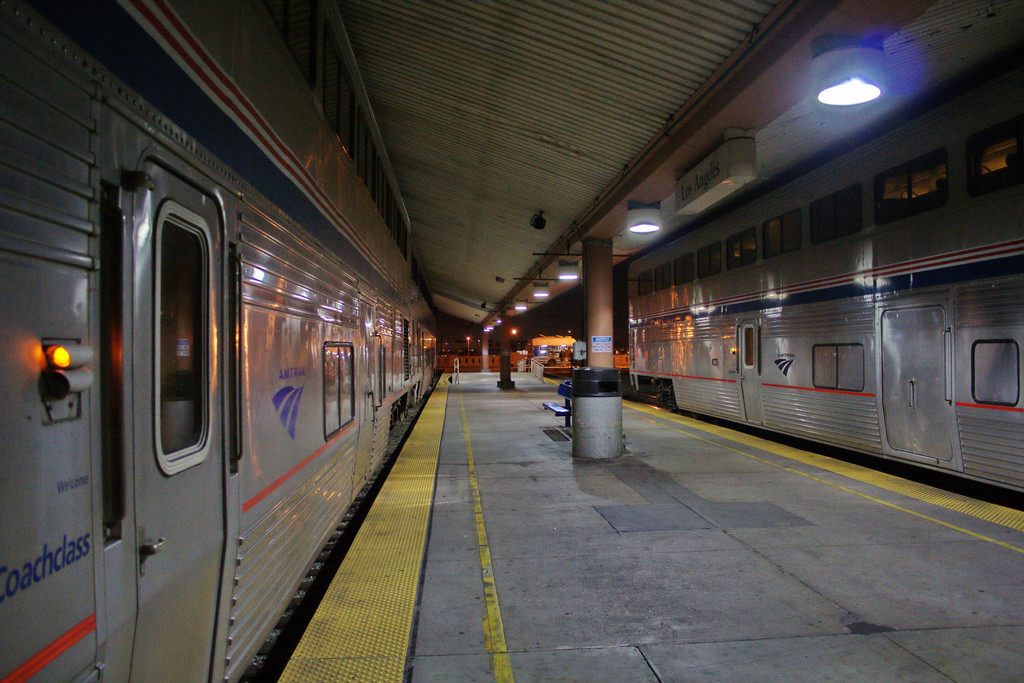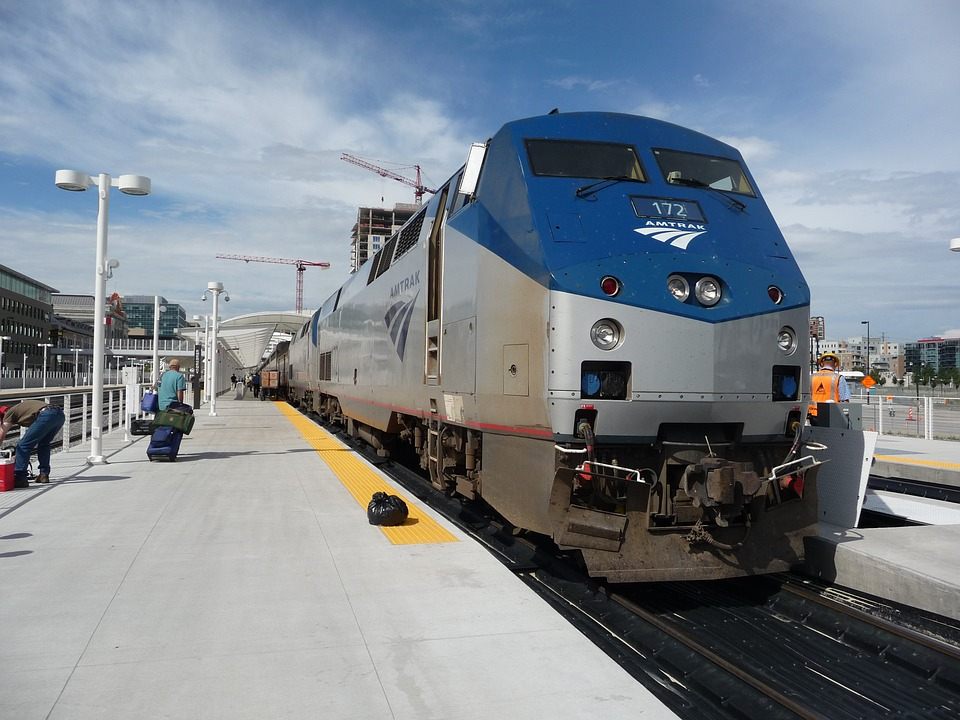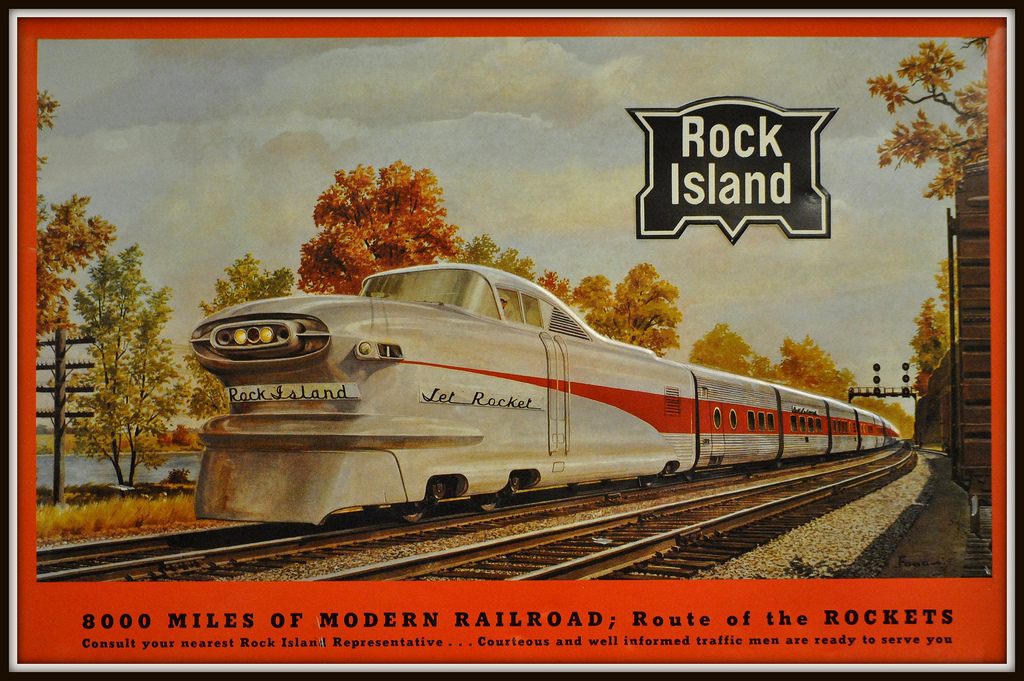The Consequences of Amtrak Not Owning Its Own Tracks
Was your train late, recently?

A version of this post originally appeared on Tedium, a twice-weekly newsletter that hunts for the end of the long tail.
The Amtrak system has a problem, a uniquely American problem. And it’s one that was there from the start—the kind of thing that makes folks like one-time passenger rail advocate Anthony Haswell say things along the lines of this 1992 quote: “Twenty-five years after I set out to save the American passenger train, I feel personally embarrassed over what I helped to create.”
What would make someone say something like that about what’s effectively their life’s work?
In short: railroad tracks. More specifically: the rail service doesn’t own many of them, a situation arising from the its origins, as a product of the Rail Passenger Service Act of 1970, when it was created largely because railroad companies could not make passenger rail profitable anymore. But while that law put hundreds of passenger lines under Amtrak’s control, it did not give them ownership over the vast majority of country’s railroad tracks, meaning that unlike nearly every other country in the world, the American government largely doesn’t own its own intercity rail infrastructure.

How much does Amtrak not own? Fully 97 percent of its route miles are run on tracks owned by someone else, a circumstance which, among other consequences, means that there’s little incentive for those that do own the tracks to build new ones that might improve passengers’ experience.
So why did the government do this again? Simply put, the industry was heading toward a major derailment—specifically in the case of Penn Central. The product of a massive merger between multiple regional railroads, Penn Central filed for bankruptcy slightly more than two years after it first sprung to life—the largest corporate bankruptcy of all time by that point and the very definition of too-big-to-fail. The harsh comedown for Penn Central threatened to hobble rail service, both freight and passenger, on the East Coast, which was then and now the most successful area of the country for when it came to putting people in trains. Penn Central’s failure led to the creation of what became Amtrak, and a few years later, Conrail, a federally run freight train-system that managed the remains of Penn Central and other dormant rail lines until someone picked up the mantle.

In the case of Amtrak, the move was, in the beginning, deeply controversial. During during its earliest days in 1971, it had just 184 trains running—a sharp decrease from the number of lines run by train operators prior to the switch-over, and a point not missed by Congress, where senators complained after entire states were ignored by the revamped model.
Others were uncomfortable with the precedent it set.
“This is quasi nationalization of the nation’s rail system. It will most likely lead to more government participation as time goes on,” Time correspondent Mark Sullivan said of the move just before President Nixon signed it into law. “The U.S. until now has been the only industrialized country in the world with a totally private rail system. The Penn Central debacle, if not turned around quickly, will hasten the day that this private system becomes another arm of the government.“
This scenario was the kind of stuff libertarian thesis papers were designed for. In fact, the reason it got support from Nixon and other conservatives, according to Haswell, the founder of the National Association of Rail Passengers, was because they didn’t think it would survive.

”There was no question that it would probably not pay for itself,” Haswell told the National Journal in 2015. “But the Nixon administration and other conservatives thought that once it was demonstrated that it wouldn’t pay for itself, it would be abolished.”
What ended up happening is a little more nuanced, since while Amtrak is still operating today, you’d be hard-pressed to call it much of a success. That’s because while train passengers in other parts of the world whiz from city to city in relatively short periods of time, Amtrak barely scrapes by, unable to handle infrastructure upgrades, and hobbled financially by its need to cover both profitable sectors (read: East Coast and anywhere near a big city) and less-profitable sectors (read: everywhere else, especially if there’s a full-service dining car) with a tiny budget.
After 2015’s deadly Amtrak crash in Philadelphia, former Amtrak CEO David Hughes put the problem in stark terms.
“What Amtrak has is among the poorest I’ve ever seen given the level of use they get,” he told CBS News. “The accumulated deferred maintenance and lack of attention really makes it almost a Third World operation.”
And that’s on its own tracks in the most popular region for the rail service in the country, where, in places like Philly and D.C., upwards of 80 percent of its trains show up on time.

But expand beyond that, and the numbers are often depressing. The Auto Train, a bring-your-vehicle ride between Virginia and Florida, had an on-time performance rate of roughly 35 percent in March. The Empire Builder, which starts in Chicago and makes it way up to the Pacific Northwest, has a rate that’s even worse—it’s on time just 30 percent of the time.
The biggest reason? The railroad tracks, since the private companies that do own them are more likely to maximize their investment by focusing on things that make them more money, like freight, which there is more of, travels more often, and is directly within many of the companies’ control.
And the industry isn’t particularly shy about this.
Take this passage from a 2008 policy paper published by the Association of American Railroads, which represents freight-line owners:
Freight railroads recognize the significant potential benefits of a strong national passenger rail system and work to accommodate passenger trains when mutually-beneficial arrangements can be negotiated, as the many successful examples of passenger trains operating on freight-owned property make clear.
However, passenger service must not degrade freight railroads’ ability to serve their freight customers. Freight railroads lower shipping costs by billions of dollars each year and produce an immense competitive advantage for our farmers, manufacturers, and miners in the global marketplace. If passenger railroads impair freight railroads and force freight that otherwise would move by rail onto the highways, those advantages would be squandered. Moreover, highway gridlock would worsen; fuel consumption, pollution, and greenhouse gas emissions would rise; and our mobility would deteriorate—outcomes that are completely contrary to the goals of expanding passenger rail in the first place.
This has also proven a surprisingly fraught area in the legal space in recent years. A 2008 law meant to give Amtrak some leverage in improving on-time performance has proven hugely controversial with freight train companies, and AAR and Amtrak have been fighting the issue in court ever since. (Notably, AAR won a recent round on the issue.)

It’s a complex problem that takes a lot of forms, but it comes down to this simple point: Amtrak thinks that passenger trains should get preference over freight trains. (Passengers probably feel the same way.) The companies that manage those freight trains feel differently. And there’s a lot of competition for these limited resources.
And that’s why, if you take an Amtrak train outside of the Boston/New York/DC area, it’s probably gonna be late.
Fun stuff, eh?
A version of this post originally appeared on Tedium, a twice-weekly newsletter that hunts for the end of the long tail.









Follow us on Twitter to get the latest on the world's hidden wonders.
Like us on Facebook to get the latest on the world's hidden wonders.
Follow us on Twitter Like us on Facebook